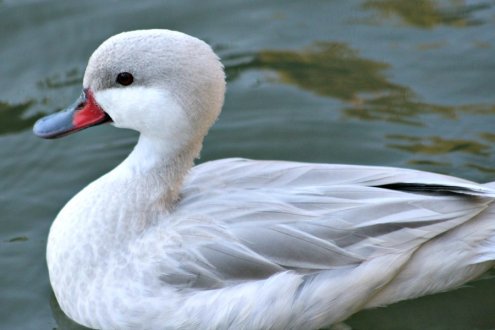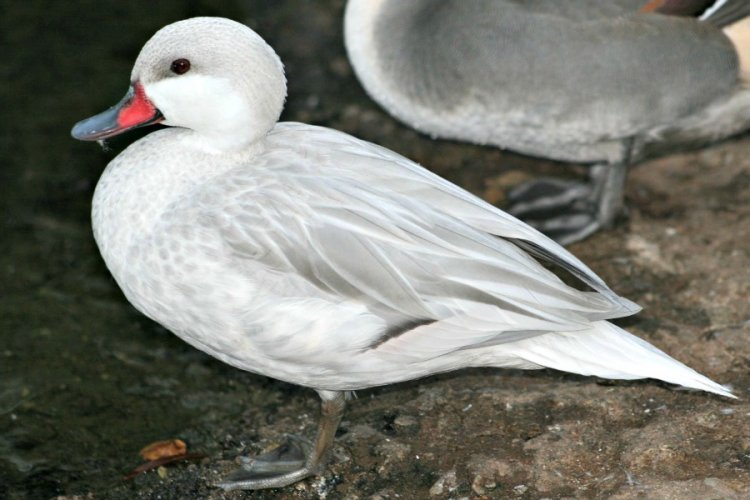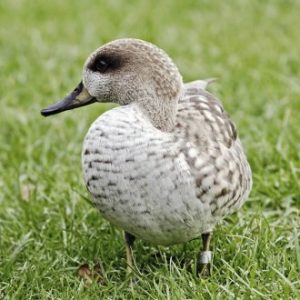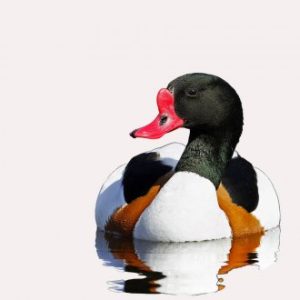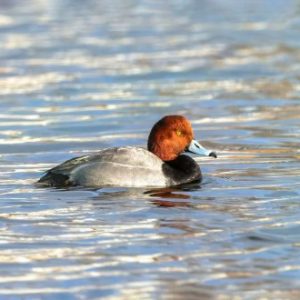Silver Bahama Pintail Ducks
The Silver Bahama Pintail Duck is a special color mutation of the Bahama Pintail. These silver birds are particularly noteworthy as they retain all the best and most alluring features of the original colored ducks but all in light and bright silver tones. The bill is still red and slate blue. The feather markings over the entire bird – from the graceful facial markings to the dramatically stippled chest and lacey waves over the wing feathers – are all pale silvers, blues, and whites.
Males and females look very much alike. And in general, Silver Bahama Pintail Ducks are friendly and easy to care for. They are docile and non-aggressive with other birds and would do well in a mixed flock of species. They are great aviary birds.
Range: Silver Bahama Pintail Ducks are only found in captivity.
Habitat: These special mutations of the Bahama Pintail are completely domesticated and are not found in the wild landscape.
Status in the Wild: Silver Bahama Pintail Ducks are considered to be domestic birds.
Status in Aviculture: Silver Bahama Pintail Ducks are in high demand due to their rarity and their beauty.
Breeding: Although Silver Bahama Pintails are capable of breeding within their first year, they usually do not start to lay until year two. Breeding season starts as spring begins to warm up, and is usually around May in most areas of the U.S. Silver Bahama Pintails are usually very successful at incubating and raising their ducklings in an aviary environment. Clutches consist of 6-10 cream-colored eggs, which take about 24 days to hatch.
Lifespan: Silver Bahama Pintail Ducks can live over 15 years.
Size: Silver Bahama Pintails are medium-sized ducks, measuring 15 – 18 inches in length. Drakes usually weigh between 18 – 19 ounces, and females weigh 14 – 15 ounces.
Housing Requirements: Silver Bahama Pintail Ducks are native to the Caribbean, and so some winter protection will be needed if they are kept in an area that gets very cold. They are hardy and adaptable birds though and tend to thrive even when kept in colder climates. An 8 foot by 12-foot aviary, 6 feet high, would be recommended per pair. These ducks also require a water source for swimming, dabbling, and bathing.
Diet: Silver Bahama Pintail Ducks can be fed a high-quality waterfowl or game bird diet.
Miscellaneous Notes: Silver is an interesting mutation from a genetic perspective, quite different in the outcome than white, apricot, or blond mutations, which are sex-linked recessive traits. The silver color mutation is an autosomal recessive trait. This means that if two Silver Ducks produced four ducklings, only one would look silver. Two would look normal but carry the silver recessive gene. And the last would look normal and be normal genetically, not carrying the gene for silver at all. It is impossible through looking at them to tell which of the normal colored offspring have or don’t have the silver gene. The only way to tell is through breeding them and seeing how the ducklings turn out.

